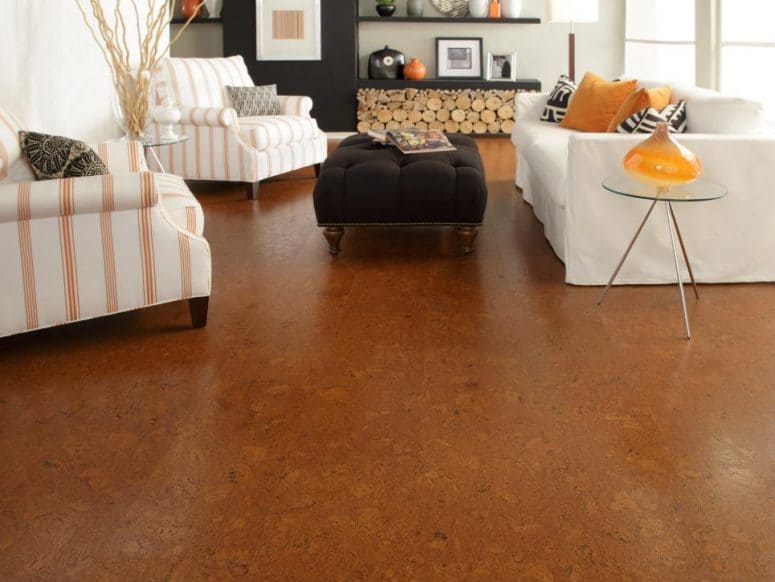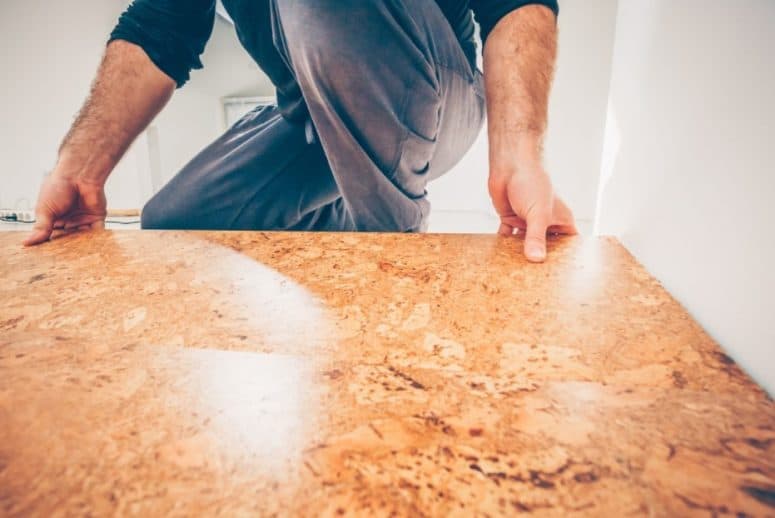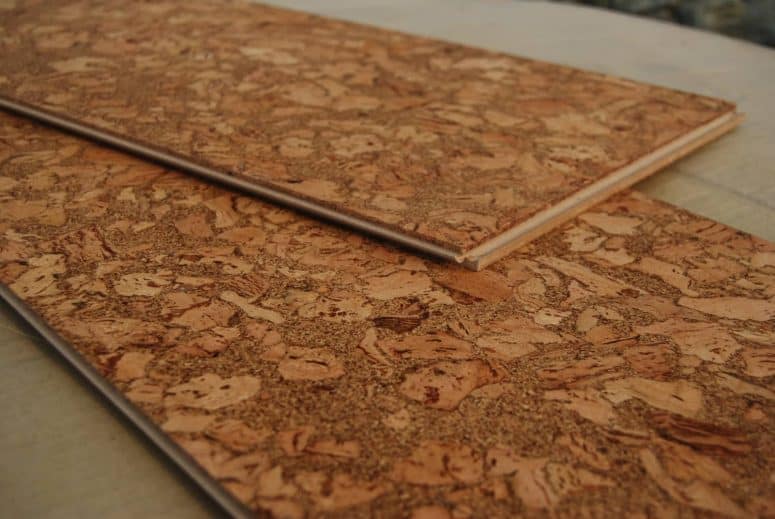Cork flooring stands out as an incredibly eco-friendly flooring option. Derived from the bark of oak trees, it is harvested every nine years without causing harm to the living tree. The bark is carefully stripped, leaving the protective layer intact for the tree’s growth and regeneration.
To create cork flooring, the harvested cork is boiled and compressed into sheets using adhesive resins. Some cork flooring products also incorporate high-density fiberglass layers for added strength and durability.
The soft and comfortable texture of cork makes it a versatile choice for various rooms. Many people opt for cork flooring in their kitchens, as it provides a cushioning effect that reduces strain while standing for extended periods. It is also well-suited for children’s rooms and spaces for the elderly, offering a softer landing surface in case of falls.
In addition to its comfort, cork flooring possesses unique properties due to its natural composition. The compressed cork material contains numerous air pockets within its layers, allowing it to absorb footstep noise and minimize sound transmission, making it a quieter flooring option overall.
Cork Flooring Appearance

Cork Flooring Installation

Installing cork flooring can be done through two methods: gluing it down or creating a floating floor.
If you choose to glue it down, you may encounter some challenges as it requires preparing the existing flooring base to ensure a clean and smooth substrate for installation. It’s important to note that once it’s glued down, it can be more difficult to replace or change in the future.
On the other hand, the floating floor method is commonly used for cork flooring. Cork flooring planks are designed with interlocking edges that easily connect with each other. This installation method is relatively easier, but it does require a well-prepared and level substrate as the foundation for the floating floor.
Cork Flooring Cost
Cork flooring is priced per square foot, whether in the form of planks or tiles. The cost of cork flooring typically falls within the range of $2 to $12 per square foot.
The price of cork flooring is influenced by factors such as its thickness and overall quality. The finishing of the flooring can also indicate its level of quality.
If you opt for professional installation, the cost generally ranges from $1 to $2 per square foot. Therefore, it is important to consider the installation method you prefer when selecting cork flooring for your space.
Cork Flooring Maintenance
Maintaining cork flooring is a relatively easy and straightforward task. Regular sweeping, vacuuming, and mopping are all you need to keep it clean. Damp mopping is also safe to do, and even small water spills are not a concern.
However, it’s important to avoid water flooding or prolonged exposure to water on cork flooring as it can cause warping and surface damage.
In addition, be mindful of sunlight exposure as it can cause the warm color of the cork flooring to fade over time. To preserve its color, it’s advisable to consider the installation of window treatments that can protect the floor from excessive sunlight.
By taking these precautions and properly managing sunlight exposure, you can ensure the durability and longevity of your cork flooring.
Cork Flooring Pros and Cons

- Undoubtedly, cork flooring is an excellent choice for eco-conscious individuals. Its production process ensures the preservation and regeneration of cork trees, making it an environmentally friendly option. This aspect will greatly resonate with those who prioritize sustainability.
- Furthermore, cork flooring is biodegradable, thanks to its use of natural materials. This feature ensures that, even at the end of its lifespan, cork flooring will not contribute to environmental waste.
- In addition to its eco-friendly nature, cork flooring offers impressive sound-absorbing qualities. Its soft and cushiony texture effectively reduces noise generated by footsteps, providing a quieter and more peaceful environment. Moreover, this softness also acts as a protective barrier, preventing fragile items like glass from easily breaking when accidentally dropped.
- Another significant advantage of cork flooring is its hypoallergenic properties. The varnish coating on its surface naturally inhibits the growth of allergens, microorganisms, and insects. This makes cork flooring an ideal choice for areas prone to allergies, such as kitchens and children’s rooms, where a safe and clean environment is paramount.
- Not only is cork flooring environmentally friendly and functional, but it also boasts a warm and natural appearance. Its attractive aesthetic is complemented by the soft and comfortable feel underfoot, adding a cozy touch to any space.
- When it comes to installation, cork flooring offers simplicity and versatility. You have the option to either glue it down or create a floating floor, providing flexibility to suit your preferences and making the installation process straightforward and convenient.
- One of the primary concerns when it comes to cork flooring is its maintenance. Regular refinishing and resealing are necessary to ensure that the surface remains in optimal condition and effectively sealed.
- Cork flooring is susceptible to scratches, despite having a protective seal. The natural materials used and the non-permanent nature of the sealant make it less resistant to scratches and marks.
- Another aspect to consider is the sensitivity of cork flooring to sunlight exposure. Prolonged exposure to sunlight can cause the floor to fade and lose its original color.
- While cork flooring is waterproof to a certain extent, it is not impervious to water flooding. Excessive water and moisture can seep into the layers of the flooring, resulting in warping and potential damage to the surface.
- In addition to the risk of discoloration, the presence of water within the layers of cork flooring can pose a danger. It can compromise the stability and structural integrity of the floor, leading to potential issues and the need for repairs.